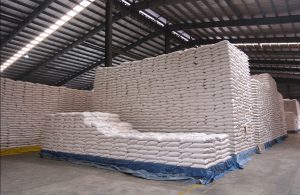The Foundation for Economic Freedom (FEF) strongly opposes the Department of Agriculture’s (DA) recent proposal to increase tariffs on rice imports from the current 15 percent to 25 percent, warning this will potentially raise inflation by 1.2 to 1.4 percentage points.
“This is a dangerous gamble in an economy where rice makes up 9 percent of the Consumer Price Index basket and where the poorest households spend around 20 percent of their budget on rice alone, highlighting the disproportionate burden on low-income families. We reiterate: high rice prices hurt the poor the most,” FEF said in a statement

At a time when food inflation remains a top concern for millions of Filipino households, FEF said this move will only aggravate price pressures and set back the very gains achieved under the Rice Tariffication Law (RTL) of 2019.
Contrary to the stated aim of “stabilizing the market,” FEF said that a tariff hike on rice imports—alongside the looming threat of reinstating import quotas—would restrict supply and artificially drive prices up.
Last year, the country imported nearly 4.7 million metric tons (MTs) of rice. Capping rice imports at 1 million MTs will result in a huge supply gap of more than 3 million MTs,which, given current productivity levels, domestic production will not be able to plug.
In fact, the RTL is a landmark reform precisely because it dismantled a failed quota-based regime that historically caused price spikes and fostered rent-seeking behavior. The RTL ushered in a rules-based trading system that brought down the average price of rice by PHP7 per kilo and reduced inflation volatility. It freed consumers from the arbitrary whims of bureaucratic discretion and opened the rice trade to more participants, encouraging efficiency and competition.
The problem in Philippine agriculture is not over-importation—but under-productivity. Protectionist measures like high tariffs or import caps will not solve this. They only serve to shield inefficient sectors from the need to reform. The real path to a competitive, food-secure Philippines lies in long-overdue structural improvements: investing in irrigation, post-harvest facilities, mechanization, market linkages, research and development, and land consolidation to enable economies of scale.




